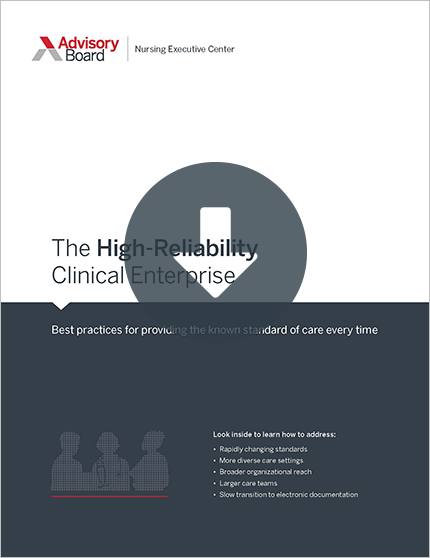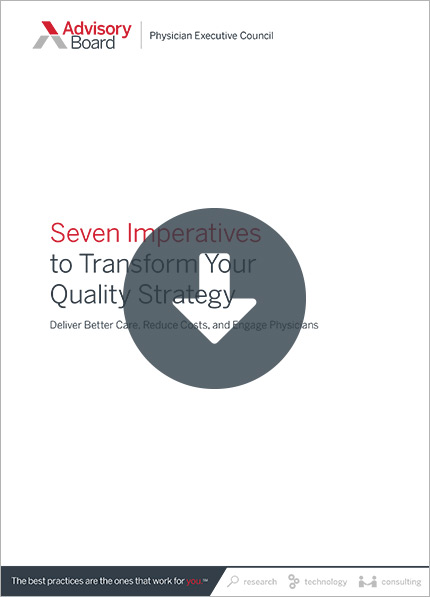Auto logout in seconds.
Continue LogoutEditor's note: This popular story from the Daily Briefing's archives was republished on March 19, 2019.
Hospitals have long-turned to the manufacturing and aviation industries for processes that reduce medical errors—but should they be looking elsewhere? According to The Economist, behavioral science and new technologies might be "more promising ... approaches" to making health care safer.
Cheat sheet series: Evidence-based medicine 101
How common are medical errors?
The National Academies of Sciences, Engineering, and Medicine in its landmark 2000 paper "To Err is Human" estimated that medical errors were responsible for as many as 98,000 deaths in in U.S. hospitals each year. According to The Economist, that's twice as many deaths as are caused by road accidents. Researchers at Johns Hopkins in 2016 estimated that the real number was even higher, around 250,000, though The Economist says that's "probably an exaggeration."
The problem extends beyond the United States: A 2017 study from the Organisation for Economic Co-operation and Development estimated that 10% of patients worldwide are harmed while they're in the hospital, and that unintended medical harm is the 14th leading cause of "ill health" in the world, on par with malaria, The Economist writes.
According to Ashish Jha from Harvard University, harm done to patients was historically blamed on the actions of individual doctors. However, "To Err is Human" helped shift researchers' understanding by demonstrating that in most cases patient harm stemmed from dysfunctional workflows, The Economist reports.
Hospitals turn to the manufacturing and aviation industry
In hopes of identifying safer ways of working, many hospitals have looked to the manufacturing and aviation industry—which have embraced managerial philosophies such as "lean management" and error-proofing techniques such as checklists to significantly improve their own performance, The Economist reports.
For example, Virginia Mason Medical Center in Seattle implemented technique "lean" philosophy, borrowed from Toyota's industrial management practices, after a patient death in 2004 to improve safety. Every technique in the hospital was analyzed and standardized. Staff are encouraged to "stop the line" any time they believe a procedure is unsafe. In addition, Virginia Mason created a standardized protocol for executives to visit wards and discuss safety risks with staff.
Virginia Mason says that since 2001, it has reduced liability claims and become more profitable. However, according to The Economist, "there is little evidence that introducing manufacturing-based management to other hospitals has made much difference." For example, a literature review in 2016 found that only 19 of 207 articles published on the effects of "lean" theory were both peer-reviewed and showed quantifiable results.
Other hospitals have turned to checklists that mimic those used by airplane pilots. Before beginning a surgery, for example, a clinical team will might use a checklist to ensure they have the correct equipment and patient and that they know what operation they're about to perform. A 2009 study involving eight hospitals in eight countries found that introducing a checklist could reduce the rate of death during surgery from 1.5% to 0.8%, and the rate of complications from 11% to 7%.
But other studies have found more discouraging results on the implementation of checklists. A 2014 study of 200,000 surgical procedures in 101 hospitals using checklists in Ontario, Canada, found no link to improved outcomes—perhaps because surgeons feel infantilized when asked to use checklists, the medical sociologist Charles Bosk has argued.
The promise of behavioral science
Rather than looking to aviation and manufacturing, hospitals might be better served to look to behavioral science to reduce medical errors, The Economist argues.
For example, behavior scientists argue that clinicians often suffer from "default bias," or the tendency to accept the status quo. In the clinical setting, this includes accepting the default settings on medical equipment, such as artificial ventilators—even though research has shown that the default settings can put pressure on the lungs and provoke inflammation, The Economist reports. A 2016 study from the University of Bristol found that patients could receive safer ventilation if the defaults on their ventilators were switched.
Meanwhile, some health systems are testing projects to "nudge" clinicians toward making safer decisions. In 2016, the University of Pennsylvania established the Penn Medicine Nudge Unit (PMNU), dedicated to using behavioral science to improve outcomes. So far, it has shown positive results, The Economist reports. For example, prior to the PMNU's involvement, just 15% of heart attack patients were referred to cardiac rehabilitation, partly because doctors had to individually opt patients into the service by filling out a lengthy form. The PMNU eased the process by making referral to rehab the default action and providing pre-filled forms, and as a result, referral rates rose to 85%.
The PMNU also tackled opioid prescriptions by changing the defaults in electronic health records (EHRs) from recommending 30 pill opioid prescriptions to 10 pills. As a result, the number of patients on 10-pill prescriptions doubled (The Economist, 6/28).
Cheat sheet series: Evidence-based medicine 101
Been awhile since your last statistics class? It can be difficult to judge the quality of studies, the significance of data, or the importance of new findings when you don't know the basics.
Download our cheat sheets to get a quick, one-page refresher on some of the foundational components of evidence-based medicine.
Don't miss out on the latest Advisory Board insights
Create your free account to access 1 resource, including the latest research and webinars.
Want access without creating an account?
You have 1 free members-only resource remaining this month.
1 free members-only resources remaining
1 free members-only resources remaining
You've reached your limit of free insights
Become a member to access all of Advisory Board's resources, events, and experts
Never miss out on the latest innovative health care content tailored to you.
Benefits include:
You've reached your limit of free insights
Become a member to access all of Advisory Board's resources, events, and experts
Never miss out on the latest innovative health care content tailored to you.
Benefits include:
This content is available through your Curated Research partnership with Advisory Board. Click on ‘view this resource’ to read the full piece
Email ask@advisory.com to learn more
Click on ‘Become a Member’ to learn about the benefits of a Full-Access partnership with Advisory Board
Never miss out on the latest innovative health care content tailored to you.
Benefits Include:
This is for members only. Learn more.
Click on ‘Become a Member’ to learn about the benefits of a Full-Access partnership with Advisory Board
Never miss out on the latest innovative health care content tailored to you.


